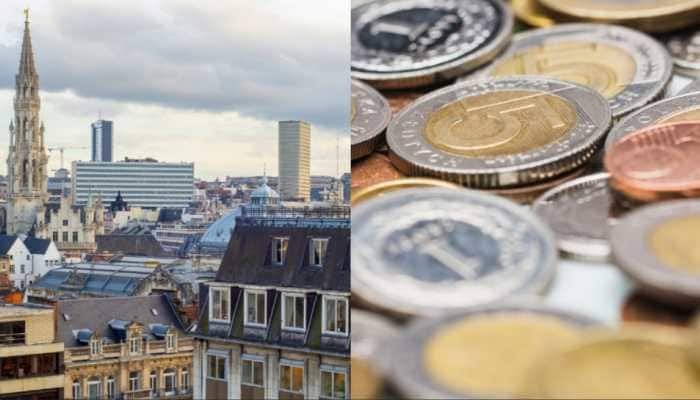Know Indian Railways Trivia
Here’s a list of interesting trivia about Indian Railways.
Trending Photos
)
Zee Media Bureau
Here’s a list of interesting trivia about Indian Railways:
The Darjeeling Railway
• 1800: The Darjeeling Steam Tramway (DST) begins operations on Siliguri-Darjeeling section.
• 1881: DST becomes Darjeeling Himalayan Railays (DHR).
• 1915: DHR opens two new branches to Kishengunj and Teesta Valley
• 1948: DHR is taken over by the State and it became a world heritage site on December 2, 1999.
• May 2000: Diesel hauling of DHR inaugurated.
Running the Railways • 1849: Great Indian Peninsular Railway (GIPR) incorporated. A `guarantee system` that assured 5 percent returns to all British railway companies in India established.
• 1853: Railways begin in India with private funds and government support.
• 1868: Calcutta and South Eastern (CSER) suffers flood losses, transfers all lines to government in return for capital costs, becoming the first state owned railways.
• 1882: Almost 75 railway operations, owned by the private sector and princely states and a variety of track gauges. Post of Director General of Railways (DGR) is created in the Central Public Works Dept (CPD) to coordinate the network.
• 1889: States takes over Nizam Railways.
• 1900: GIPR taken over by state.
• 1901: Based on the recommendations of Sir Thomas Robertson Committee, a Railway Board is set up with three members. • 1904: More members included in the Board. • 1905: Powers and structure of Railway Board are formalised. It is now under Dept of Commerce and Industry with an independent Chairman. • 1907: Govt purchases all major lines and re-leases them to pvt operators • 1920: Based on Acworth Committee recommendations govt takes over actual management of all railways and separates railway finances from general finances. This practice is followed even today. • 1922: Retrenchment Committee under Lord Inchcape recommends drastic cuts in workforce and expenses. • 1922: Railway Board reorganised, overriding powers given to Chief Commissioner railways. • 1924: Railway finances separated from general govt budget. • 1925: First Railway Budget presented. • 1925: EIR Co and GIPR, the largest networks, taken over the state. • 1937: The post of Minister for Transport and Communication created. The minister was a civil servant and dealt with the Railway Board. • 1951: Zonal grouping of Railways begins.
Railways’ First
• August 16, 1853, 3:35 pm: 21 gun salute launches first passenger train in India, by Great Indian Peninsular Railway from Bori Bunder to Thane -- 400 passengers, 14 carriages, three engines, Sindh, Sultan and Sahib. Journey time: 1 hour 15 minutes.
• August 15, 1854: First train in east India, Howrah to Hoogly.
• July 1, 1856: First train in south India, Veyasarapdy (Madras) to Wallajah Road (Arcot).
• March 6, 1859: First train in north India, Allahabad to Kanpur
• 1862: First princely state-owned line, Dabhol to Miyagam in Baroda. Train pulled by oxen. Later became Baroda State Railways.
• August 1, 1864: First train arrives in Delhi from Calcutta, ferried on boats across Ganga in Allahabad 1867: First suburban service begins from Virar to Bombay Backbay.
• 1873: World`s first metre gauge service begins, Delhi to Rewari.
Half Ticket, Full Service
• 1862: 2-tier seating started in III classes.
• 1871-74: Gas lamps introduced in many passenger carriages.
• 1872: Air-cooling introduced in I class coaches on GIPR lines.
• 1874: IV class introduced; coaches with no seats.
• 1888: AH Wheeler and Co introduces Railway Library series publications.
• 1905: Lavatories provided in all lower class carriages.
• 1936: Air conditioning introduced in coaches. • 1952: Fans and light mandated for passenger coaches.
• 1956: III class passengers allowed use of dining car.
• 1967: II class sleeper coaches for long distance trains.
• 1974: III class abolished.
• 1986: Computerised reservation started at Delhi.Going Loco
• 1893: First railway foundry set up at Jamalpur.
• 1895: First locomotive built with old parts at Ajmer workshop.
• 1899: `Lady Curzon`, first locomotive built in India, at Ajmer.
• January 26, 1950: Chittaranjan Loco Works (CLW) set up. Builds first steam engine, `Deshbandhu`.
• 1952: TELCO begins productions of YG locos.
• 1959: First steam loco designed by CLW.
• 1961: Diesel Loco Works, Varansi established.
What`s in a Name?
• January 1, 1882: GIPR station opened to public in Bombay.
• 1887: Station named Victoria Terminus (VT) after Queen Victoria on her jubliee year.
• May 4, 1996: VT renamed Chhatrapati Shivaji Terminus.
• IB, near on South Eastern Railway is the shortest station name.
• Venkatanarasimharajuvariapeta on Southern Railways is the longest station name.
Venkatanarasimharajuvariapeta
April 2000
• Total length of rail tracks: 62, 759 km. • Electrification of tracks: 14, 261 km. • Total number of engines: 7, 517. • Total number of bogies: 2, 44, 419. • Passengers travelling annually: 458 crores.
Total number of workers
• 1950-51: 9, 13, 600
• 1970-71: 13, 74, 200
• 1980-81: 15, 72, 200
• 1990-91: 16, 51, 800
• 1999-00: 15, 77, 200
Stay informed on all the latest news, real-time breaking news updates, and follow all the important headlines in india news and world News on Zee News.
Live Tv







)
)
)
)
)
)
)
)
)
)
